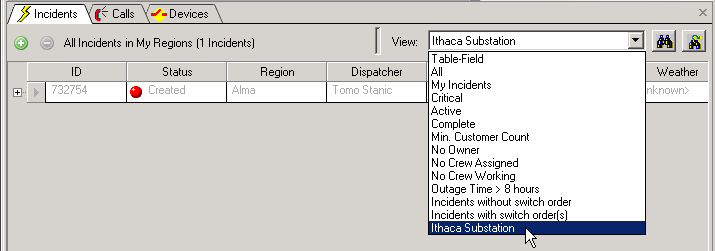

| Responder Overview > Responder Customizations > Filters > Grid Filters |
To customize these filters, you’ll modify the XML for the dockable window in ControlStylesConfig.xml using VB Script. You’ll need to know which dockable window you’re modifying. Below are the dockable windows with grid filters that may be customized. These names are as they appear in ControlStylesConfig.xml. The name in parentheses corresponds to the name of the window in the user interface.
This topic walks through an example of adding a filter that displays all of the crews associated with a particular company. This filter resides on the Alerts (AlertsGrid) dockable window in Responder Explorer.
 |
The tables referenced by the AlertsGrid (Alerts) and PendingEditsGrid (PendingEdits) controls do not correspond to tables in the geodatabase. Instead, their columns are listed in ControlStylesConfig.xml. For example: <Table Represents="PendingEdits" Editable="false"> <Columns Key=""> <Column Represents="TimeStarted" IsSortColumn="true" /> <Column Represents="OperationID" Visible="false" /> <Column Represents="Substation" Visible="false" /> <Column Represents="Feeder" Visible="false" /> </Columns> Use these columns to create your filter. |
<FilterFinders> <FilterFinder Key="IncidentDevices_Substation" FilterFinderType="Both"> <Evaluator>Vbs:[Substation] = 'ITHACA'</Evaluator> <Caption>Ithaca Substation</Caption> <Description>All incident devices on the Ithaca Substation</Description> </FilterFinder> </FilterFinders>
 |
Note that VB Script is case-sensitive. The casing in the example above is correct. The following casing will fail: <Evaluator>VBS:[Substation] = "ITHACA"</Evaluator> |

Figure 1, Sample filter in the user interface
Attributes